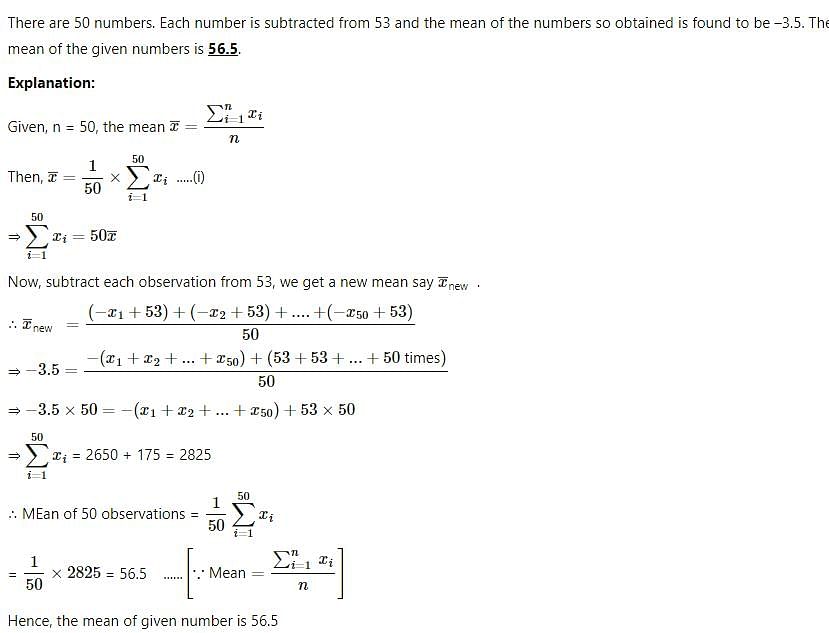Test: Statistics- 1 - Class 9 MCQ
25 Questions MCQ Test Mathematics (Maths) Class 9 - Test: Statistics- 1
A student collects information about the number of school going children in a locality consisting of a hundred households. The data collected by him is
Class mark of a particular class is 9.5 and the class size is 6, then the class interval is
Out of sixteen observations arranged in an ascending order, the 8th and 9th observations are 25 and 27. Then, the median is
Vihaan has marks of 92, 85, and 78 in three mathematics tests. In order to have an average of exactly 87 for the four math tests, he should obtain
To analyse the election results, the data is collected from a newspapers. The data thus collected is known as
The class size of a distribution is 25 and the first class interval is 200-224. Then, the class marks of first two class intervals are
Which of the following is NOT a common measure of central tendency?
What is the median of the data 78, 56, 22, 34, 45, 54, 39, 68, 54, 84?
Which of the following variables are discrete ? 1. Size of shoes, 2. Number of pages in a book, 3. Distance travelled by a train, 4. Time
In a frequency distribution, the mid-value of a class is 60.5 and the width of the class is 10. The lower limit of the class is
The mean of six numbers is 23. If one of the numbers is excluded, the mean of the remaining numbers becomes 20. The excluded number is
For a given data, the difference between the maximum and minimum observation is known as its
The width of each of five continuous classes in a frequency distribution is 5 and the lower class limit of the lowest class is 10. The upper class limit of the highest class is
The mean of five observations is 15. If the mean of first three observations is 14 and that of last three is 17, then the third observation is
In an examination, ten students scored the following marks: 60, 58, 90, 51, 47, 81, 70, 95, 87, 99. The range of this data is
In a bar graph, 0.25 cm length of a bar represents 100 people. Then, the length of bar which represents 2000 people is
If, for the set of observations 4, 7, x, 8, 9, 10 the mean is 8, then x is equal to
A set of data consists of six numbers: 7, 8, 8, 9, 9 and x. The difference between the modes when x = 9 and x = 8 is
There are 50 numbers. Each number is subtracted from 53 and the mean of the numbers so obtained is found to be – 3.5. The mean of the given number is
|
44 videos|412 docs|54 tests
|






















